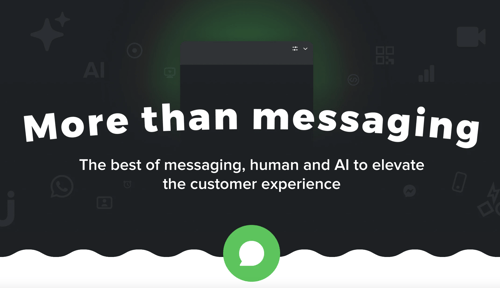iAdvize

What's the Definition of a Full-stack Platform?
Often associated with the developer profession, the term “full-stack” has different meanings according to the companies using it. But the main characteristic of these companies relies on their ability to provide and control the service and experience they are selling. The “full-stack approach" implies extending the fundamental skills of the company beyond traditional marketing, commercial, and technological skills.
Beyond mastering the production chain, the combination of technology with business innovation is characteristic to a full-stack business. In some cases, the experience implies moving from the digital world to the world of atoms--Tesla manufactures its own cars, Netflix produces television programs, etc. In other cases, there's no need to manipulate tangible assets, but you still have to combine perspective technology with functional, service-based, operational expertise.
1. Being Full-stack Means You Can Thwart Operational Complexity
Full-stack startups are not just technology companies. To successfully implement a full-stack approach, these companies usually have to ignore the sacrosanct idea that a startup should focus on one offer and perfectly execute it.
They generally choose to transform operational complexity in a feature and offer premium service. Uber revolutionized urban transportation by putting this strategy in place. The same goes with how Airbnb revolutionized holiday rentals and now, the travel experience.
Frichti is the perfect example of the full-stack concept
French startup Frichti, which grabbed $13.4 million in 2016, perfectly illustrates the concept of a full-stack platform. Its economic model relies on the integrating the entire value chain within the platform, from cooking to the delivery process.
“We're a restaurant, we do e-commerce and offer logistics at the same time. We integrate the entire value chain, which enables us to better control our costs and prices”
-- Julia Bijaoui, Co-founder of Frichti
It’s also a state of mind: we see Frichti as a food delivery company, but its co-founders see it as a tech company. It’s the perfect example of how technology can solve an operational problem.
Why does the iAdvize platform describe itself as full-stack?
When it comes to the B2B sector, iAdvize also follows this logic. It’s now possible to manage human resources in customer service teams thanks to ibbü, an independent, on-demand pool of brand advocates, a service offered by the iAdvize platform. We provide companies with a conversational commerce platform that enables them to master all communication touch-points in real-time.
2. The Characteristics of a Full-stack Platform: Creating Perceptive Technology
Full-stack startups seek to eliminate as many commercial and logistical intermediaries as possible to save time and money, master their market, and engage with the end customer. Reducing intermediaries is possible due to the web and its new applications.
Whatever the industry, seeing a company with a tech state of mind enables you to turn the sector's structure upside down. Uber’s example is a very concrete one: an application for a simple service at the heart of an industry with confusing logistics.
By using an API, the technology ensures a bridge between worlds. Any physical business (based on a tangible product, a human service, etc.) can be designed like a digital company with strong potential.
3. Offering an Integrated User Experience
Chris Dixon cites Apple as a classic example of the full-stack approach. This American giant designs its product software and distributes it in its own stores. Most importantly, Apple offers a unique user experience with premium customer service and a similarly unique in-store shopping experience.
Uber not only controls the entire value chain, but also became a third-party app for its partners, meaning they can integrate Uber’s ride-booking service directly on their apps. Hilton Hotels & Resorts does this and sends reminders directly in the Uber app to help their customers book a car with just one click. Thanks to branding and personalization, customers can remain in the Hilton app while having access to some of the services offered by Uber. This enables the group to create less friction in the user experience and builds a growing dependence on their service.

.png)
.png)






